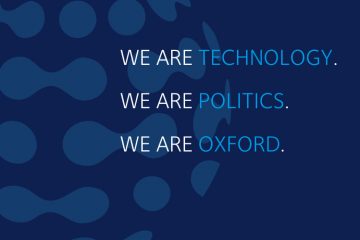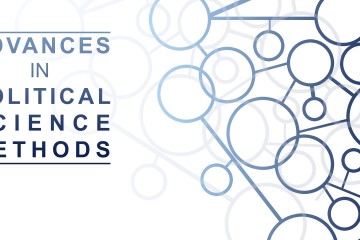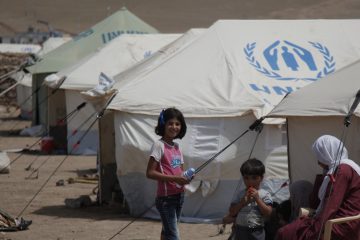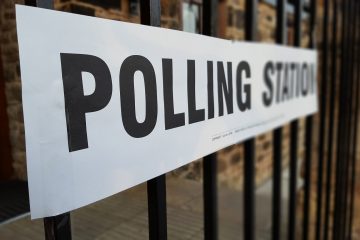
Anonymity in the Age of Ubiquitous Facial Recognition
Facial Recognition Technology will have a severe impact on society in the future, resulting in a loss of anonymity for everybody. The Russian artist Egor Tsvetkov demonstrated with an experiment that it is already possible today to identify random people on the metro by just using their photos and a facial recognition app. Currently this was done by processing images afterwards with face search and augmenting it with human verification, but it is not difficult to imagine every cell phone or connected car being able to identify anyone’s face and perform a search on the web within less than a second. Instead of classical fears of big brother’s mass surveillance, there might be technology ready for peer-to-peer mass surveillance. The …

When does traditional statistics become machine learning?
When does traditional statistical modelling (TSM) become machine learning (ML)?[i] “Machine learning” has truly become a buzzword that is applied rather liberally to a wide range of modelling applications. But, the difference is far from a question of semantics: there are fundamental differences between ML and TSM that data practitioners should keep in mind. Similarities But, let’s start off with some commonalities between ML and TSM. In both disciplines our aim is to build a (statistical) model (to use TSM terminology) that minimises loss, that is, that achieves the smallest possible difference between observed values and the values estimated by the model. In so doing, we have to achieve a successful balance between model complexity and generalisability: pick too complex a …

The Shorter, the Better? What it Takes to and What to Take Away from Publishing a Very Short Article
A few months ago, I published an exceptionally short paper presenting experimental evidence on a particular issue of survey methodology. This experience has taught me valuable lessons about conveying the necessary information under extreme restrictions on the word count. In its original version, my paper was 2,300 words long and it was formatted in accordance with the convention of the field: an introduction highlighting the relevance of the research question and the gaps in the existing literature, an empirical section describing the methods and presenting the results, and a conclusion discussing implications, limitations, and offering directions for future research. Since the study relied on experimental methods and was already short, I decided to submit this contribution to the Journal of …

Overcoming challenges to the Inclusion of Persons with Disabilities in Emergencies
Including persons with disabilities in emergency responses is a shared responsibility of all humanitarian actors As discussed in the first article of this series, persons with disabilities have been overwhelmingly excluded from humanitarian aid in different crises worldwide. In general, services provided by governments and NGOs are not accessible to these individuals, increasing their vulnerabilities during emergency responses. Activists and NGOs, however, have been trying to change this unacceptable situation. Actors such as International Disability Alliance (IDA), International Disability and Development Consortium (IDDC), Humanity & Inclusion, Christian Blind Mission (CBM), HelpAge International, Light for the World, Sightsavers have been leading an international movement to guarantee that the needs of persons with disabilities are met during humanitarian crises. This article will introduce and contextualize these efforts, and …

How humanitarian crises increase the vulnerability of persons with disabilities
The World Health Organisation (WHO) estimates that 15 percent of the global population (or over 1 billion people) have some form of disability. These figures can grow even larger due to natural disasters or conflicts, when more people are exposed to debilitating accidents or violence. Despite general awareness amongst different actors that persons with disabilities are more likely to become subject to a vast range of risks during humanitarian crises, few practical actions are usually taken to reduce these perils. Many actors do not comply with the recommendations from international agreements on ensuring the participation of persons with disabilities in programming, nor do they recruit technical experts on inclusion. With that in mind, this article discusses the exclusion of persons …

General election 2017: votes from anywhere
Some six months before Theresa May called a surprise general election, The Road to Somewhere was published. In it, David Goodhart argues that the old political divide, between left-wingers and right-wingers, has been superseded. The electorate, Goodhart claims, is now better divided between “anywheres” and “somewheres”. Peter Wiggins looks at the Goodhart argument in the context of the 2017 general election. Of “Anywheres”, “Somewheres” and “Inbetweeners” According to The Road to Somewhere, roughly 25% of the population are “anywheres” – they are mobile, metropolitan, liberal, tolerant, at home wherever they may be, and wary of group attachment. These voters are likely to be highly educated, and they tend to approve of “mass immigration,” subscribing, as Goodhart puts it, to “progressive …

The young(-ish) have spoken. What now?
When Teresa May announced her snap election last April, she not only ruined my Roman holiday, but also made me cringe about having written a blog in the immediate aftermath of the Brexit referendum in which I had encouraged just that, namely: “Go with Dignity – Call a Snap Election!” Why? By then I had accepted the prevailing wisdom that the Conservatives would win a landslide victory, providing them with a three-figure majority in the Commons. This would have given her the popular mandate to push through Brexit in the ‘hardest’ possible form, thus nullifying any chance for a second ‘in-out’ referendum on the outcome of the Article 50 negotiations, which I had by then advocated in “The Will of …

Will a different Brazil emerge from its political crisis?
It is tempting to speculate about what will happen next in Brazil after the abrupt and tantalizing unfolding of a new chapter in the country’s ongoing political crisis. Yet, it is important to first pause to note what is at stake: the country has just entered one of the most uncertain moments of its modern history. The foundations of the republic are crumbling before our eyes and the country’s long-term future is as unclear today as it has ever been. What the future of Brazil will be depends on the next few days and weeks. There is mounting pressure on President Michel Temer after the audio of a private conversation between him and Joesley Batista, co-owner of JBS (the world’s …









